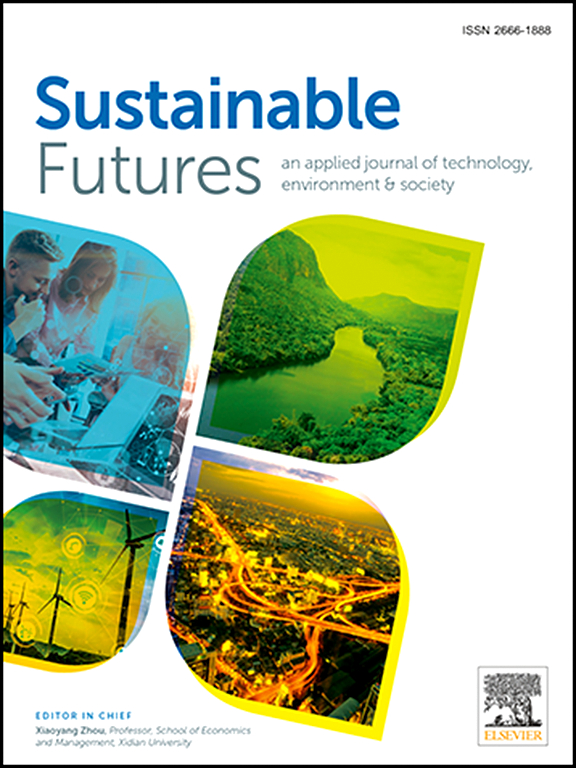AI-powered mixed reality acceptance in mining: A PLS-SEM and Bayesian Network modeling
IF 4.9
2区 社会学
Q2 ENVIRONMENTAL SCIENCES
引用次数: 0
Abstract
Facilitating digital transformation and sustainable management in the mining industry requires a strategic understanding of how emerging technologies are perceived and adopted by the workforce. Given the sector’s traditionally conservative culture and its resistance to change, there remains a pressing need for empirical investigations that illuminate the pathways toward successful innovation adoption. This study explores the acceptance of AI-powered Mixed Reality (AIPMR) technology among the mining workforce in Indonesia, focusing on its potential to revolutionize human-machine interaction and contribute to smart mining solutions. Drawing upon the Technology Acceptance Model (TAM), an extended conceptual framework was developed to examine the influence of six key factors on employees’ intentions to adopt AIPMR technologies. Data were collected from 304 mining employees and analyzed using Partial Least Squares–Structural Equation Modeling (PLS-SEM), further complemented by Bayesian Network analysis to enhance predictive robustness and uncover probabilistic interdependencies. The empirical results demonstrate that perceived usefulness, perceived ease of use, perceived novelty, top management support, and corporate culture significantly influence employees' attitudes toward adopting AIPMR technology, which subsequently impacts their acceptance of this innovation. The model in this research accounts for 72.6 % of the variance in intention to adopt AIPMR technology innovation. This research contributes to the literature by offering a data-driven foundation for developing decision support systems that align with the socio-technical dynamics of the mining industry. It also provides actionable insights for stakeholders seeking to implement technology acceptance strategies that facilitate sustainable digital transformation through the integration of AI-powered Mixed Reality in high-risk industrial environments.
采矿中人工智能驱动的混合现实接受:PLS-SEM和贝叶斯网络建模
促进采矿业的数字化转型和可持续管理需要对新兴技术如何被劳动力感知和采用有战略性的理解。鉴于该行业传统上保守的文化和对变革的抵制,迫切需要进行实证调查,以阐明成功采用创新的途径。本研究探讨了印度尼西亚采矿业对人工智能驱动的混合现实(AIPMR)技术的接受程度,重点关注其改变人机交互和为智能采矿解决方案做出贡献的潜力。在技术接受模型(TAM)的基础上,我们开发了一个扩展的概念框架来研究六个关键因素对员工采用AIPMR技术意愿的影响。收集了304名矿工的数据,并使用偏最小二乘-结构方程模型(PLS-SEM)进行分析,进一步辅以贝叶斯网络分析,以提高预测稳健性并揭示概率相互依赖性。实证结果表明,感知有用性、感知易用性、感知新颖性、高层管理支持和企业文化显著影响员工采用AIPMR技术的态度,进而影响员工对该创新的接受程度。本研究模型占采用AIPMR技术创新意愿方差的72.6%。本研究通过为开发与采矿业社会技术动态相一致的决策支持系统提供数据驱动的基础,为文献做出了贡献。它还为寻求实施技术接受策略的利益相关者提供了可操作的见解,通过在高风险工业环境中集成人工智能驱动的混合现实来促进可持续的数字化转型。
本文章由计算机程序翻译,如有差异,请以英文原文为准。
求助全文
约1分钟内获得全文
求助全文
来源期刊

Sustainable Futures
Social Sciences-Sociology and Political Science
CiteScore
9.30
自引率
1.80%
发文量
34
审稿时长
71 days
期刊介绍:
Sustainable Futures: is a journal focused on the intersection of sustainability, environment and technology from various disciplines in social sciences, and their larger implications for corporation, government, education institutions, regions and society both at present and in the future. It provides an advanced platform for studies related to sustainability and sustainable development in society, economics, environment, and culture. The scope of the journal is broad and encourages interdisciplinary research, as well as welcoming theoretical and practical research from all methodological approaches.
 求助内容:
求助内容: 应助结果提醒方式:
应助结果提醒方式:


